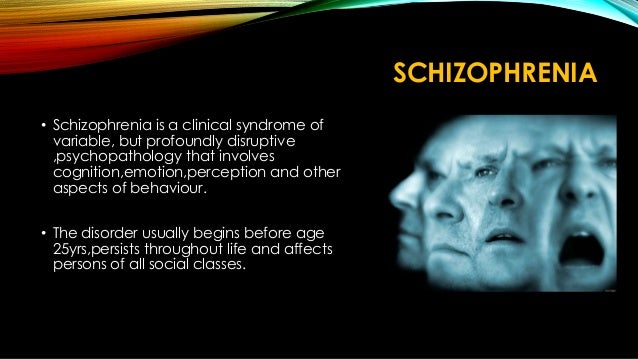Direct Current Stimulation Boosts Cognition in Schizophrenia
Transcranial direct current stimulation (tDCS) may improve short-term memory in people with schizophrenia, a small study suggests.
Cognitive impairment is nearly ubiquitous in patients with schizophrenia, and effective ways to address it are lacking. “If tDCS could remediate the neurocognitive dysfunction that afflicts most patients with schizophrenia, it could prove to be an enormously important adjunctive treatment for the disease,” David J. Schretlen, PhD, with the Departments of Psychiatry and Behavioral Sciences and Radiology and Radiological Science at Johns Hopkins University, in Baltimore, Maryland, told Medscape Medical News.
He noted that tDCS has “no known side effects other than some mild discomfort (itching, tingling, or burning sensations) at the site of the scalp electrodes. And I do mean ‘mild.’ I’ve worn a tDCS device many times, and it’s barely detectable. In fact, many people can’t feel it at all.”
The study was published online in Clinical Schizophrenia and Related Psychoses.
Enhanced Cognition
Because tDCS has been shown to enhance cognitive functioning in healthy adults, Dr Schretlen and colleagues explored its value and tolerability in patients with schizophrenia. The study included 11 participants - five adults meeting DSM-IV criteria for schizophrenia, and six first-degree relatives who were free of schizophrenia or other Axis I mental disorders. First-degree relatives of patients with schizophrenia often show some of the same cognitive problems as their relatives with schizophrenia, albeit to a lesser degree.
Each participant completed tasks thought to be mediated by the prefrontal cortex during two 30-minute tDCS treatment sessions. In these sessions, the participants were provided with a constant current of 1.5 mA that targeted the left and right dorsolateral prefrontal cortex (DLPFC).
 All participants tolerated tDCS well, the researchers report. They further observed that anodal stimulation over the left DLPFC improved performance relative to cathodal (control) stimulation on measures of working memory and aspects of verbal fluency relevant to word retrieval. The effects were “surprisingly strong,” Dr Schretlen said. The effects of tDCS were “slightly stronger” in the first-degree relatives.
All participants tolerated tDCS well, the researchers report. They further observed that anodal stimulation over the left DLPFC improved performance relative to cathodal (control) stimulation on measures of working memory and aspects of verbal fluency relevant to word retrieval. The effects were “surprisingly strong,” Dr Schretlen said. The effects of tDCS were “slightly stronger” in the first-degree relatives.
“Our findings are consistent with other studies showing that tDCS applied over the left dorsolateral prefrontal cortex can enhance working memory in other populations,” said Dr Schretlen.
Durable Effect?
Reached for comment on the study, Georgios Petrides, MD, with the Division of Psychiatry Research, the Zucker Hillside Hospital, which is part of the North Shore–LIJ Health System, Glen Oaks, New York, said that the study results are promising but that the challenge is to determine whether the effects last. “There are things right now that can improve cognition temporarily, including caffeine,” he noted.
“We have no treatments for cognitive impairment in schizophrenia, and it’s an area that a lot of groups are looking at right now,” Dr Petrides said. The DLPFC plays a key role memory and is abnormal in people with schizophrenia, so it “makes sense” to target this area, he added.
He noted that tDCS is a “very benign treatment, and it doesn’t require much, but the question is, does it last or not? The long-term effect has not been studied or been published at this point.”
Dr Schretlen agrees that more study is needed.
“We clearly need more sham-controlled, randomized clinical trials to better understand which patients benefit from tDCS, what is the optimal ‘dosage’ (ie, current strength, duration of stimulation, frequency of sessions, etc), and which symptoms of the disease are most responsive to tDCS. But the fact that tDCS is so benign makes it very attractive as a potential form of treatment, even if it turns out that the effects are modest and/or only seen in some patients,” he said.
On that front, the Johns Hopkins team has just received approval from the institutional review board to do a randomized, sham-controlled study in which they will administer either active or sham tDCS for 30 minutes a day for 5 days while study participants engage in “fun but cognitively challenging computer games designed to engage and assess a person’s attention and working memory,” Dr Schretlen said.
In related research, Dr Schretlen noted that he and his colleagues have found that bifrontal tDCS improved working memory in adults with autism spectrum disorder.
“The effects were quite robust as well. So this is another potential patient population that might benefit from tDCS.” The researchers are now preparing the manuscript for publication.
This research was supported by the Therapeutic Cognitive Neuroscience Professorship; the Therapeutic Cognitive Neuroscience Fund; the Benjamin and Adith Miller Family Endowment on Aging, Alzheimer’s, and Autism; the William and Mary Ann Wockenfuss Research Fund Endowment; and a grant from the National Institute of Child Health and Human Development. Under an agreement with Psychological Assessment Resources, Inc, Dr Schretlen and a coauthor are entitled to a share of royalties on sales of a test used in the study described in this article. Other coauthors and Dr Petrides have disclosed no relevant financial relationships.
###
Clin Schizophr Relat Psychoses. Published online November 3, 2014.